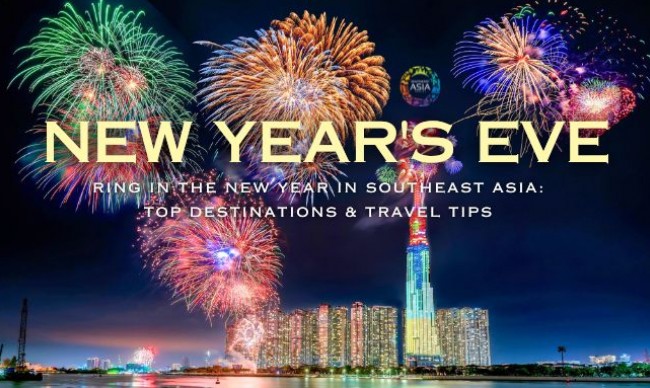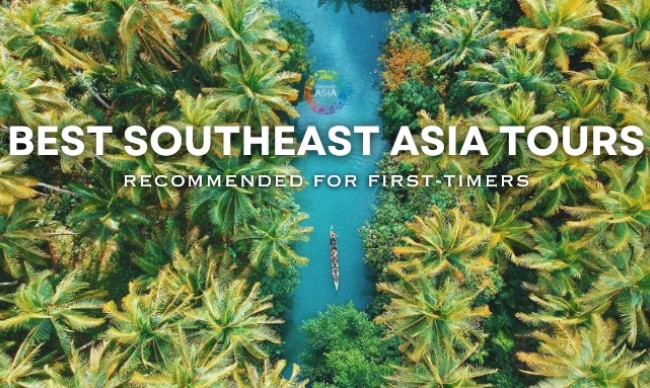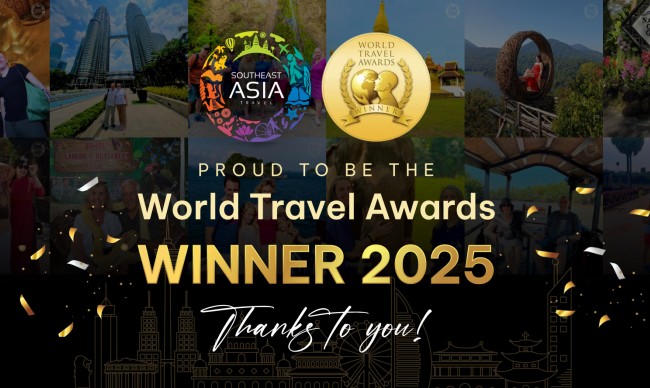Southeast Asia is a treasure trove of natural beauty, with lush rainforests, dramatic karst landscapes, and unique wildlife. Its national parks not only protect this biodiversity but also offer travelers the chance to experience nature at its most awe-inspiring. From Vietnam’s majestic caves to Indonesia’s dragon-inhabited islands, here are the best national parks in Southeast Asia that should be on every nature lover’s bucket list.

1. Phong Nha-Ke Bang National Park, Vietnam
Located in central Vietnam, Phong Nha-Ke Bang National Park is a UNESCO World Heritage Site known for its spectacular limestone karst formations and extensive cave systems. Highlights include the world’s largest cave, Son Doong, and the mesmerizing Paradise Cave. Adventurous travelers can discover underground rivers, hike through dense jungles, and spot rare wildlife like the Asian black bear.
- Location: Quang Binh Province
- Best Time to Visit: February to August (dry season for better caving)
- Tips: Plan ahead for cave visits, particularly for Son Doong. Wear sturdy footwear for hiking, and carry insect repellent and a flashlight for cave exploration.

2. Ao Phang-Nga National Park, Thailand
Famous for its emerald-green waters and imposing limestone islands, Ao Phang-Nga National Park is a paradise for kayakers and nature enthusiasts. Located in southern Thailand, the park’s most iconic site is James Bond Island, which was featured in The Man with the Golden Gun. Beyond its cinematic appeal, the park boasts to mangrove forests, sea caves, and amazing marine life.
- Location: Phang-Nga Province
- Best Time to Visit: November to February (cool and dry weather)
- Tips: Rent a kayak for the best way to venture into sea caves and lagoons. Go early in the morning to avoid crowds, and pack sunscreen and a waterproof bag for your belongings.

3. Doi Inthanon National Park, Thailand
Known as the "Roof of Thailand," Doi Inthanon National Park is home to the country’s highest peak, which stands at 2,565 meters. The park boasts a cool climate, stunning waterfalls, and colorful flower gardens. Vacationer can embark on hiking trails, see the twin stupas built to honor the King and Queen of Thailand, and enjoy birdwatching in this biodiversity hotspot.
- Location: Chiang Mai Province
- Best Time to Visit: November to February (cool and pleasant weather)
- Tips: Dress warmly as temperatures can drop significantly at higher altitudes. Hire a local guide for trekking, and don’t miss the twin stupas and waterfalls.

4. Komodo National Park, Indonesia
A UNESCO World Heritage Site, Komodo National Park is synonymous with its namesake, the Komodo dragon. These giant lizards are the park’s main attraction, but the surrounding waters are equally magnificent, offering some of the best diving and snorkeling spots in the world. Vibrant coral reefs, manta rays, and crystal-clear waters await underwater explorers.
- Location: East Nusa Tenggara Province
- Best Time to Visit: April to December (dry season for clear waters and dragon sightings)
- Tips: Always stay with a guide when observing Komodo dragons. Carry plenty of water, wear comfortable shoes for trekking, and bring snorkeling gear to enjoy the reefs.

5. Phnom Kulen National Park, Cambodia
Phnom Kulen National Park is a sacred site in Cambodia, rich in history and natural beauty. The park is celebrated for Kbal Spean, the “Valley of a Thousand Lingas,” with carvings decorating the riverbed, as well as the fascinating Phnom Kulen Waterfalls. The birthplace of the ancient Khmer Empire, this national park holds spiritual significance for Cambodians and provides trippers a serene experience amidst its green surroundings.
- Location: Siem Reap Province
- Best Time to Visit: November to February (cool and dry season)
- Tips: Hire a local guide for birdwatching and wildlife spotting. Bring binoculars and a camera, and consider staying in eco-friendly accommodations nearby.

6. West Bali National Park, Indonesia
West Bali National Park introduces a tranquil escape from the island’s bustling tourist hubs. This pristine sanctuary of Indonesia is a haven for birdwatchers, featuring species like the critically endangered Bali myna. The park also includes coastal mangroves, savannahs, and coral reefs, making it a diverse destination for both land and sea exploration.
- Location: Bali
- Best Time to Visit: April to October (dry season for outdoor activities)
- Tips: Wear comfortable shoes for hiking and bring a swimsuit for the waterfalls. Respect the religious sites, and consider hiring a guide to learn about the park’s history.

7. Taman Negara National Park, Malaysia
One of the oldest tropical rainforests in the world, Taman Negara National Park spans over 130 million years of ecological history. Adventurers can trek through the wilderness, traverse the canopy walkway, and encounter wildlife such as Malayan tapirs and sun bears. River cruises and night safaris add to the adventure in this Malaysian gem.
- Location: Pahang, Kelantan, and Terengganu
- Best Time to Visit: March to September (dry season for trekking and river activities)
- Tips: Join a guided jungle trek for safety and a deeper understanding of the rainforest. Carry insect repellent, waterproof clothing, and sturdy hiking boots.

8. Kota Kinabalu National Park, Malaysia
Situated in Malaysian Borneo, Kota Kinabalu National Park is dominated by the prominent Mount Kinabalu. As a UNESCO World Heritage Site, the park is renowned for its exotic flora and fauna, including the world’s largest flower, the Rafflesia. Whether climbing Mount Kinabalu or uncovering the park’s diverse ecosystems, visitors are in for an unforgettable impression.
- Location: Sabah, Malaysian Borneo
- Best Time to Visit: February to April (dry season for climbing Mount Kinabalu)
- Tips: Secure your climbing permits well in advance if hiking Mount Kinabalu. Pack layers for varying temperatures, and take time to acclimatize before ascending.

9. Puerto Princesa Subterranean River National Park, Philippines
Located on Palawan Island, the Last Frontier of the Philippines, this UNESCO World Heritage Site encompasses an impressive underground river that flows directly into the sea. Sightseers can take a boat tour through the river’s vast cave system, marveling at the stalactites and stalagmites. The park also features limestone cliffs, verdant forests, and an array of wildlife, making it a must-see destination.
- Location: Palawan Island
- Best Time to Visit: November to May (dry season for optimal river tours)
- Tips: Go on a guided jungle hike for safety and a better knowledge of the region. Bring sturdy hiking boots, waterproof clothes, and bug repellent.

Southeast Asia’s national parks offer an incredible range of experiences, from hiking towering peaks to snorkeling healthy reefs and encountering wonderful wildlife. These parks not only showcase the region’s natural beauty but also underscore the importance of conservation. Whether you’re an avid adventurer or a casual nature lover, these destinations promise memories that will last a lifetime.
































